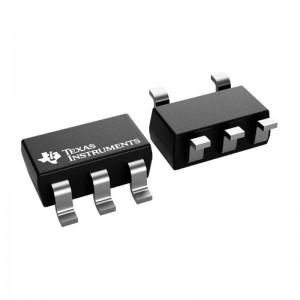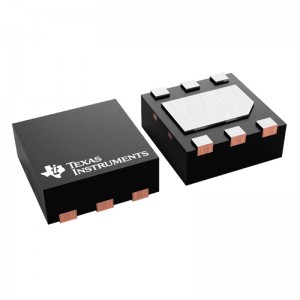
Products
TPS7A2033PDBVR SOT-23-5 Electronic components integrated circuit Voltage regulator chip
Features for the TPS7A20
●Low output voltage noise: 7 µVRMS
○No noise-bypass capacitor required
●High PSRR: 95 dB at 1 kHz
●Very low IQ: 6.5 µA
●Input voltage range: 1.6 V to 6.0 V
●Output voltage range: 0.8 V to 5.5 V
●Output voltage tolerance: ±1.5% (max)
●Very low dropout:
○140 mV (max) at 300 mA (VOUT = 3.3 V)
○145 mV (max) at 300 mA (VOUT = 3.3 V, DBV)
●Low inrush current
●Smart enable pulldown
●Stable with 1-µF minimum ceramic output capacitor
●Packages:
○1-mm × 1-mm X2SON
○0.616-mm × 0.616-mm DSBGA
○2.90-mm × 1.60-mm SOT23-5
Description for the TPS7A20
The TPS7A20 is an ultra-small, low-dropout (LDO) linear regulator that can source 300 mA of output current. The TPS7A20 is designed to provide low noise, high PSRR, and excellent load and line transient performance that can meet the requirements of RF and other sensitive analog circuits. Using innovative design techniques, the TPS7A20 offers an ultra-low noise performance without the addition of a noise bypass capacitor. The TPS7A20 also provides the advantage of low quiescent current, which can be ideal for battery-powered applications. With an input voltage range of 1.6 V to 6.0 V and an output range of 0.8 V to 5.5 V, the TPS7A20 can be used for a wide variety of applications. The device uses a precision reference circuit to provide a maximum accuracy of 1.5% over load, line, and temperature variations.
The TPS7A20 features an internal soft-start to lower the inrush current, thus minimizing the input voltage drop during start up. The device is stable with small ceramic capacitors, allowing for a small overall solution size.
The TPS7A20 has a smart enable input circuit with an internally controlled pulldown resistor that keeps the LDO disabled even when the EN pin is left floating and helps eliminate the external components used to pulldown the EN pin.
1. Who are the staff in your R & D department? What are your qualifications?
-R & D Director: formulate the company’s long-term R & D plan and grasp the direction of research and development; Guide and supervise r&d department to implement company r&d strategy and annual R&D plan; Control the progress of product development and adjust the plan; Set up excellent product research and development team, audit and training related technical personnel.
R & D Manager: make new product R & D plan and demonstrate the feasibility of the plan; Supervise and manage the progress and quality of r&d work; Research new product development and propose effective solutions according to customer requirements in different fields
R&d staff: collect and sort out key data; Computer programming; Conducting experiments, tests and analyses; Prepare materials and equipment for experiments, tests and analyses; Record measurement data, make calculations and prepare charts; Conduct statistical surveys
2. What is your product research and development idea?
- Product conception and selection product concept and evaluation product definition and project plan design and development product testing and validation launch to market








